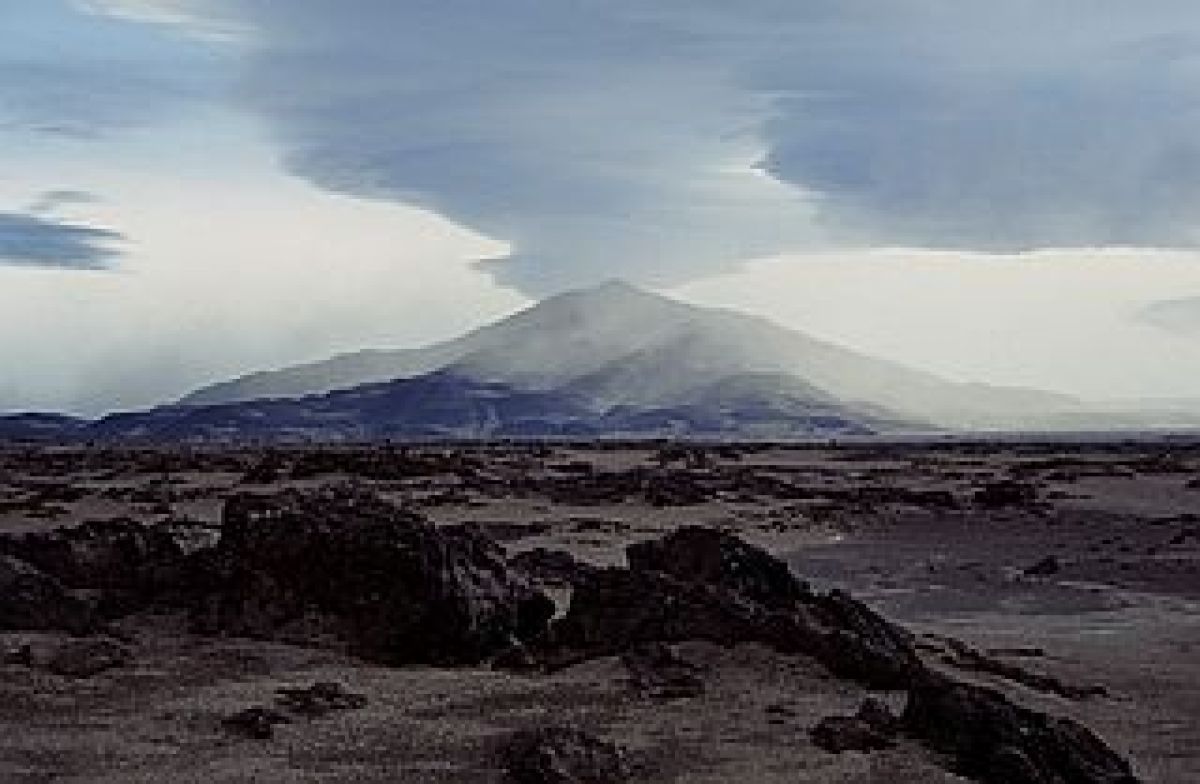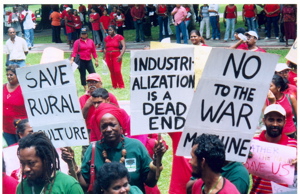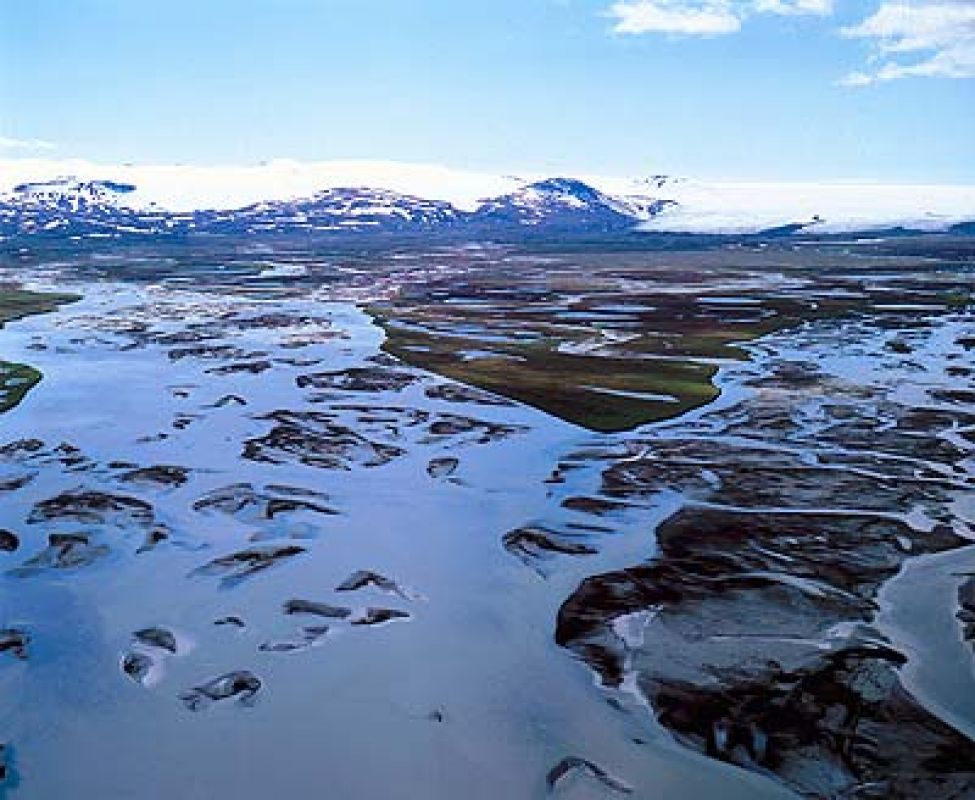'Ecology'
Tag Archive
Oct 26 2007
ALCOA, Ecology, Landsvirkjun, Saving Iceland
 Dettifoss
Dettifoss
In an interview on the radio program ‘Spegillinn’ on 23 October geophysicist Páll Einarsson said that an eruption in Upptyppingar would probably disrupt the flow of the immense glacial river Jökulsá á Fjöllum. Upptyppingar volcano lies on the bank of Jökulsá á Fjöllum. Einarsson said that the first effects of the eruption would be that the river would evaporate from the heat of the lava. Running lava would block the course of the river so that when the river would materialize again it would collect in a lake that would then overflow with unknown consequences.
This flood could pose a great danger to the surrounding farming communities and hikers, who will be almost untraceable in the great wilderness. Eight hours notice would not be enough time to warn people and secure the wilderness say rescue services.
So, it turns out that the Kárahnjukar project, which so far has entailed the complete destruction of two of Iceland’s major glacial rivers, Jökulá á Brú and Jökulsá á Fljótsdal, just to run an aluminium smelter owned by arms manufacturer ALCOA, is in fact likely to destroy the third major glacial river, the magnificent Jökulsá á Fjöllum.
Members of parliament have repeatedly claimed that they wanted to protect the whole of Jökulsá á Fjöllum, even ALCOA have paid lip service to the proposal.
Jökulsá á Fjöllum hosts Europe’s most powerful waterfall, Dettifoss. The river runs through the protected canyon of Jökulsárgljúfur National Park and past the magical area of Hljóðaklettar, much loved by tourists. All this is now threatened by the man-made eruption.
Some would say that this is vandalism of catastrophic proportions.
See also: >Imminent Man-Made Volcanic Eruption Courtesy of ALCOA and Icelandic Government
Oct 22 2007
2 Comments
ALCOA, Climate Change, Ecology, Landsvirkjun, Pollution

Upptyppingar
Today at the annual general meeting of the Icelandic Glaciological Society the geophysicist Páll Einarsson confirmed that a volcanic eruption is imminent in one or two years time in Upptyppingar near Askja. He said this was a direct result of the inundation of Kárahnjúkar. He also claimed that the earthquakes that had started in February, ceased temporarily when the inundation was halted, but as soon as it was continued the tremors began again. The water in Halslon weighs two billion tons now and over 4000 earthquakes have been recorded since February.
Einarsson added that it was a mystery why the effects of the inundation were felt 20 kilometers away from Karahnjukar, instead of in the immediate vicinity of the dams.
Read More
Oct 08 2007
2 Comments
ALCOA, Bauxite, Century Aluminum, Climate Change, Corruption, Dams, Democracy deficit, Ecology, India, Mining, Pollution, Repression, Rio Tinto Alcan
An IPS/SEEN/TNI report, 2001
This important and lengthy report from the Washington based Sustainable Energy and Economy Network is highly informative about the operational structure of the aluminum industry and the resulting impacts on human rights and the environment.
Read More
Pages: 1 2 3 4 5 6 7 8 9 10 11 12 13 14 15 16 17 18 19 20 21 22 23 24 25
Oct 08 2007
Cultural, Ecology, Economics, India
6th October 2007
This commentary by Mines and Communities
Once again India’s Supreme Court (SC) has deferred taking a decision on the mining of bauxite in Orissa’s Niyamgiri Hills, although the central government’s Ministry of Environment & Forests (MoEF) did its best to steamroller assent for Vedanta’s potentially very damaging project. Read More
Sep 14 2007
Ecology, India, Vedanta
Mines and Communities Vedanta update
Vedanta Update
7th September 2007
It’s one of the longest-enduring conflicts over a mine project in recent times. Three years ago, the Indian Supreme Court’s Central Empowered Committee (CEC) on forestry issues, condemned in no uncertain terms plans by UK-based Vedanta Resources plc to mine the Nyamgiri Hills in Orissa for bauxite. It also found that Vedanta’s alumina refinery – deliberately located at Lanjigarh, next to the hills – was being constructed in violation of forest protection legislation, and that the company had lied on several occasions in its defence of the huge project. Read More
Sep 14 2007
2 Comments
Actions, ALCOA, Amazon, Australia, Denmark, Ecology, Economics, Greenland, Greenpeace, Greenwash, India, Landsvirkjun, Laws, Pollution, Saving Iceland, South Africa
 On the 12th of September 2007, the Global Day of Action Against Heavy Industry, people in South Africa, Iceland, Trinidad, Denmark, New York, Holland and the UK protested against the heavy industrialisation of our planet. This marked the first coordinated event of a new and growing global movement that began at the 2007 Saving Iceland protest camp in Ölfus, Iceland. The common target of these protests against heavy industry was the aluminium industry, in particular the corporations Alcan/Rio-Tinto and Alcoa. Read More
On the 12th of September 2007, the Global Day of Action Against Heavy Industry, people in South Africa, Iceland, Trinidad, Denmark, New York, Holland and the UK protested against the heavy industrialisation of our planet. This marked the first coordinated event of a new and growing global movement that began at the 2007 Saving Iceland protest camp in Ölfus, Iceland. The common target of these protests against heavy industry was the aluminium industry, in particular the corporations Alcan/Rio-Tinto and Alcoa. Read More
Sep 07 2007
Amazon, Climate Change, Dams, Ecology, Greenwash, Guðmundur Páll Ólafsson, hydropower, Jaap Krater, Kárahnjúkar, Pollution, Þjórsá
Glacial rivers are not only the lifeblood of Iceland, but also of the whole planet.
River water contains sediment in suspension and various substances in solution; glacial rivers, especially, carry a large amount of sediment which increases as the atmosphere grows warmer.

Rivers of Life
Glacial rivers carry the sediment out to sea, where it takes on a new and important role in binding the greenhouse gas carbon dioxide (CO2) with calcium (Ca) and converting it into calcite and other carbonate minerals, immensely important in the ocean ecosystems of the world. Thus glacial rivers reduce pollution on Earth. This effect is greatest in recently formed volcanic territory such as Iceland, and the binding effect increases with rising atmospheric temperature.
Glacial rivers bind this gas which, along with some other gases, causes global warming and threatens the future of life of Earth.
When a glacial river is harnessed to generate electricity, this important function, and the binding of the greenhouse gas CO2, is diminished. What they generate is not GREEN ENERGY, as the advocates of hydro-power plants and heavy industry maintain, but BLACK ENERGY.
Dams and reservoirs hinder the function of glacial sediment in the oceans, and hence hydro-electric power plants that harness glacial rivers are far more harmful than has hitherto been believed. Read More
Sep 03 2007
Actions, ALCOA, Amazon, Arms Industry, Century Aluminum, Cultural, Ecology, Greenwash, Icelandic Alloys/ELKEM, India, Jaap Krater, Landsvirkjun, Norsk Hydro, Pollution, Repression, Reykjavik Energy, Saving Iceland, South Africa, Trinidad & Tobago
 Jaap Krater
Jaap Krater
Earth First Journal
3 August, 2007
Summer of Resistance in Iceland – an overview
This year, Iceland saw its third Summer of direct action against heavy industry and large dams. In a much-disputed master plan, all the glacial rivers and geothermal potential of Europe’s largest wilderness would be harnessed for aluminum production (see EF!J May-June 2006). Activists from around the world have gathered to protect Europe’s largest remaining wilderness and oppose aluminum corporations.
Read More
Sep 02 2007
1 Comment
ALCOA, Alterra Power/Magma Energy, Century Aluminum, Climate Change, Ecology, EIA, Geothermal Energy, Greenwash, Helguvík, Hengill, HRV/Hönnun, Jaap Krater, Miriam Rose, Norsk Hydro, Pollution, Reykjavik Energy, Rio Tinto Alcan, Samarendra Das, Saving Iceland
 By Jaap Krater, Miriam Rose and Mark Anslow, The Ecologist, October 2007.
By Jaap Krater, Miriam Rose and Mark Anslow, The Ecologist, October 2007.
The gates of a geothermal power station are not where you would expect to find environmental activists. But the morning of 26th July 2007 saw the access road to Hellisheidi power station in Hengill, South-West Iceland, blockaded by a group of protestors from the campaign group ‘Saving Iceland’. After a brief demonstration, nine activists were arrested and several now face legal action.
Geothermal power in Iceland is big business. Just five plants generate 3 TWh a year – more than the annual output from all the UK’s wind turbines combined (Orkustofnun 2005; BERR 2006). Geothermal power also provides at least 85 per cent of Iceland’s homes with heat and hot water. This abundance of cheap, largely CO2-free energy has attracted energy-hungry industries to the country like sharks to a carcass. Of these, by far the most energy intensive is the aluminium industry (Krater 2007; Saving Iceland 2007).
Read More
